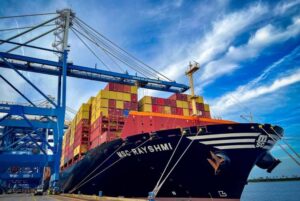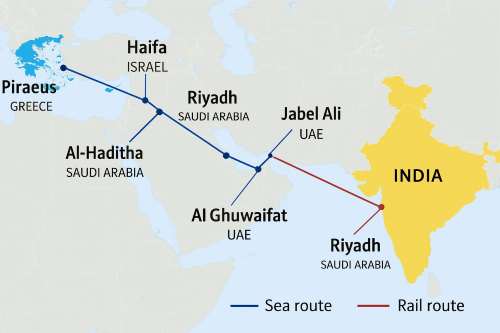
The past few years have seen global supply chains repeatedly disrupted — first by a pandemic, then by geopolitical tensions, trade wars, and regional conflicts. These shocks have forced companies and countries to revisit sourcing strategies and reconsider their exposure to concentrated manufacturing hubs. India, like many others, has felt the tremors and is now recalibrating its policies to better align with emerging global trends and to capture the opportunities they present.
China’s long-standing dominance as the global manufacturing base — powered by low costs, seamless infrastructure, favourable policies, and skilled labour — is now being questioned. The escalation of tensions between China and the United States has prompted global firms to look beyond China for manufacturing diversification. The China+1 strategy, which seeks to add alternative production destinations, has brought India into sharper focus.
READ I Income Tax Bill: Start-ups may lose tax relief
India’s appeal—and the structural hurdles
India checks many boxes: a large workforce, a rising middle-class market, and a government keen to attract global investment. Production-linked incentive (PLI) schemes have lured companies like Apple, Foxconn, and Samsung to shift part of their manufacturing to India. These schemes offer financial incentives to firms producing specific goods domestically.

Yet, India is far from an easy pivot. High capital costs, inefficient logistics, patchy infrastructure, and state-level regulatory fragmentation remain persistent bottlenecks. State-wise differences in laws and approvals hinder the ease of doing business, often making investment decisions riskier than they appear on paper.
Trade deals and strategic engagements
New Delhi has been cautious but active on trade agreements. A free trade agreement (FTA) with the United Kingdom is in place, while others are under negotiation with the European Union, the US, Canada, and Australia. India is also participating in broader strategic partnerships like the Quad and the Indo-Pacific Economic Framework (IPEF). These arrangements promise wider market access and better integration into global value chains.
However, opening up certain sensitive sectors—such as agriculture, dairy, and intellectual property — requires caution. Premature liberalisation in these areas could hurt domestic interests, particularly rural livelihoods, and provoke political backlash.
Friendshoring and strategic alignment
In a global economy increasingly shaped by politics, firms are not just seeking cost-efficiency but reliability. This has given rise to “friendshoring”—a shift towards relocating supply chains to geopolitically aligned, stable partners. India fits this bill. As the world’s largest democracy and a strategic ally to the US, Europe, and Japan, it has emerged as a credible alternative.
These countries are deepening cooperation with India on future-critical sectors such as renewable energy, rare-earth minerals, and semiconductors. The US-India Initiative on Critical and Emerging Technologies (iCET) is a case in point — focusing on areas like AI, defence tech, and chip manufacturing.
Yet, strategic alignment also comes with risks. Overdependence on a few Western partners could compromise India’s cherished strategic autonomy. Balancing partnerships without being drawn into others’ geopolitical conflicts will be key. Moreover, investor interest must be matched by delivery — delays in land acquisition, inadequate power supply, and bureaucratic hurdles can quickly erode goodwill.
Infrastructure push and trade corridors
India’s response to the new trade geography includes bold infrastructure investments. The India-Middle East-Europe Economic Corridor (IMEC), announced at the G20 Summit, envisions an alternative trade route linking India to Europe via the Middle East—bypassing the increasingly volatile Red Sea and Suez Canal. Similarly, the International North-South Transport Corridor (INSTC), connecting India to Central Asia and Russia through Iran, offers a complementary northern route.

Domestically, projects like the Delhi-Mumbai Industrial Corridor and the Dedicated Freight Corridors are improving inland connectivity and reducing logistics costs—critical for trade competitiveness. Still, environmental concerns, land acquisition disputes, and inter-governmental coordination remain obstacles. A streamlined approach between central and state agencies is vital to ensure timely implementation and investor confidence.
Reform or miss the bus
The window of opportunity is narrow. Global supply chains are undergoing structural shifts and India has the demographic, strategic, and market advantages to position itself as a reliable alternative supplier of global public goods.
To realise this potential, India must go beyond incremental reforms. Land acquisition, labour laws, and access to capital need urgent and sweeping changes. Policy reforms must be cohesive, not piecemeal—aligned across trade, industrial, innovation, and competition domains.
Becoming a credible alternative to China means more than attracting investment. It requires delivering results at speed and scale, supported by clear regulations, consistent infrastructure, and predictable policy frameworks. Only then can India graduate from being a large consumption market to a global production hub.
Naman Jain is a graduate student, and Surendar Singh Associate Professor at Jindal School of Liberal Arts and Humanities. OP Jindal Global University, Sonipat.
